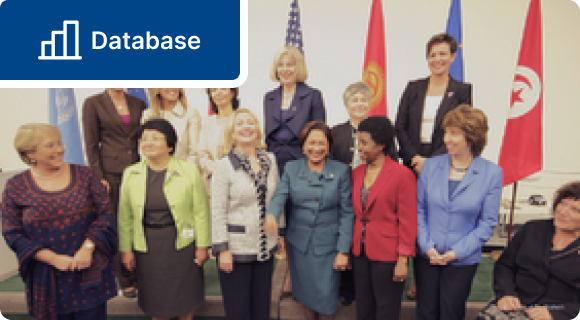Gender Quotas Database

Chad
Middle Africa
Single / Lower House
Assemblee nationale / National Assembly
| Total seats | 188 |
| Total women | 64 |
| Percentage of women | 34% |
| Gender Quota target | 30% |
| Election year | 2024 |
| Electoral system |
|
| Quota type | Legislated Candidate Quotas |
| Election details | IDEA Voter Turnout - IPU Parline |
| Legal source | Details | |
|---|---|---|
| Quota type: Legislated Candidate Quotas | Electoral law |
Any Chadian citizen who meets the conditions set out in articles 171 and 172 above, and who is nominated by a political party or a group of political parties, established or independent in accordance with the provisions of the law, may stand as a candidate in legislative elections. Each list at constituency level comprises a number of candidates corresponding to the number of seats to be filled, in compliance with the quota of at least 30% women, in accordance with legal provisions.(Article 175) |
| Legal sanctions for non-compliance | Electoral law |
The lists of candidates for legislative and local elections must contain at least 30% of women, otherwise, they will not be accepted. (Decree implementing the ordinance 012/PR/2018 instituting parity in nominative and elective functions in the Republic of Chad) |
| Is the provision of direct public funding to political parties related to gender equality among candidates? | Yes |
10% of the public subsidies are allocated to parties based on the number of women elected. See more in International IDEA's Political Finance database |
| Are there provisions for other financial advantages to encourage gender equality in political parties? | No | See more in International IDEA's Political Finance database |
Upper House
Conseil des Sages \ Senates
| Total seats | 69 |
| Total women | 26 |
| Percentage of women | 38% |
| Gender Quota target | 30% |
| Election year | 2025 |
| Electoral system | |
| Quota type | Legislated Candidate Quotas |
| Election details | IPU Parline |
| Legal source | Details | |
|---|---|---|
| Quota type: Legislated Candidate Quotas | Electoral law |
Any Chadian citizen who meets the conditions set out in articles 195 and 196 above and who is nominated by a political party or group of political parties formed in accordance with the provisions of the law, or on an independent basis, may stand for election to the Senate. Each list at constituency level includes a number of candidates corresponding to the number of seats to be filled, in compliance with the quota of at least 30% women, in accordance with legal provisions. (electoral law, article 199) |
Quota at the Sub-National Level
| Quota type | Legislated Candidate Quotas |
| Gender Quota target | 30% |
| Legal source | Details | |
|---|---|---|
| Quota type: Legislated Candidate Quotas | Electoral law |
Each list at provincial level comprises a number of candidates corresponding to the number of seats to be filled, in compliance with the quota of at least 30% women in accordance with legal provisions. (electoral law. article 236) The lists of candidates for legislative and local elections must contain at least 30% of women, otherwise, they will not be accepted. (ORDER 012/PR/2018) |
| Legal sanctions for non-compliance | Electoral law |
At the provincial and municipal level, lists must comply with the quota of at least 30% women under penalty of rejection. |
Voluntary Political Party Quotas*
| Party | Official Name | Details, Quota provisions |
|---|---|---|
| No data available. | ||
* Only political parties represented in parliament are included. When a country has legislated quotas in place, only political parties that have voluntary quotas that exceed the percentage/number of the national quota legislation are presented in this table.
Additional information
-Sources
Legal Sources:
- Transition Charter - Link
- Electoral Law - Link
- Law 19/PR/2008 establishing the Charter of political parties - Link
- Law No. 020/PR/2009 establishing the status of the political opposition in Chad - Link
- Gender Quota Law - Link
Other Sources:
- ORDER 012/PR/2018 ESTABLISHING PARITY IN ELECTIVE AND NOMINATIVEFUNCTIONS OF THE REPUBLIC OF CHAD - Link (p. 24, 25)
Additional reading
Explore more resources: Africa | Global
Know about useful additional reading for Chad? Tell us!
Submit feedback
Submit questions or comments about the Data or Tool
How did you find out about this? What do you like about it? What did you expect but did not find in using the Data or Tool?
To see how we handle your personal data, please read our Privacy Policy.

